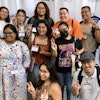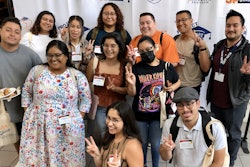Marisela Chavez was a junior at Occidental College in her hometown of Los Angeles when she decided she wanted to go to graduate school. With top academic credentials in hand, she reasoned, she could teach others the fascinating history she was learning, especially the little-understood legacy and contributions of Latinos and Latinas.
With her goal set, Chavez had only one big question: how does one get from here to there?
“Education was something my parents valued,” says Chavez, noting there was no question she was going to college. Still, “when you are 10 or 15 years old, you don’t realize what a professor is,” she says. “Even if you are in college, you don’t know what questions to ask.”
The “how” you achieve graduate degrees, pursue and attain tenure was a puzzle to her until Chavez met a professor at a nearby college who became her mentor. After that encounter, Chavez was set for a master’s. Eventually, she earned a Ph.D. at Stanford University.
“Aside from an uncle with a Ph.D., or teachers, I had no peer group to network or tell me how they got there,” says Chavez, an associate professor and chair of Chicana and Chicano studies at California State University, Dominguez Hills. “There isn’t any cookie-cutter way to do it.”
Chavez now counts nearly a dozen professors and other peers who have served as a mentor to her at various steps along her journey.
They range from teachers who gave advice on selecting graduate schools, preparing applications, writing papers for school and research proposals, selecting classes, sharing personal matters and concerns, and seeking honest feedback.















